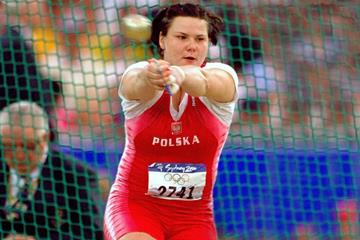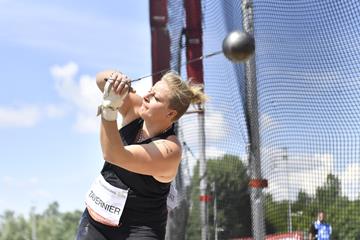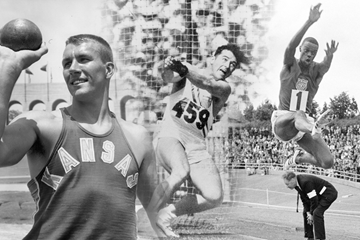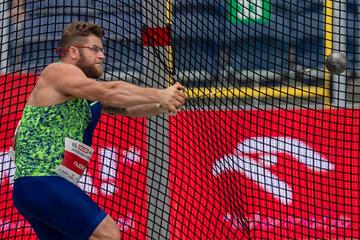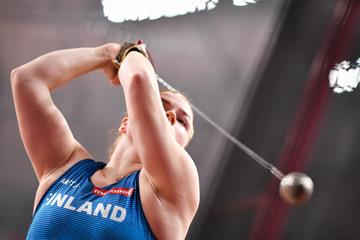 Countdown
Countdown
 Countdown
Countdown
The hammer throw is a track and field event where athletes compete by throwing a hammer, which is a metal ball that’s attached to a grip by a steel wire.
The winner of the event is the athlete who throws the hammer the greatest distance while ensuring they stay inside a seven-foot (2.135m) diameter circle. The hammer throw is an event that takes place at the World Athletics Championships and the Olympic Games.
According to Irish legend, the history of the hammer throw dates back more than 4000 years to around 2000BC when Cuchulainn threw a chariot wheel an enormous distance at the Tailteann Games in Tara, Ireland
The weight of the hammer is 7.26kg (16lbs) for men and 4kg (8.8lbs) for women, and the steel wire can be no longer than 1.22m
The first men’s hammer throw at the Olympic Games was in 1900, while the first women’s event took place exactly 100 years later at the Sydney Games
Hungary has a strong tradition in the men’s hammer and won gold medals at the 1948, 1952, 1968, 1996 and 2012 Games, while Poland has won the most women’s Olympic gold medals with four (2000, 2012, 2016 and 2021)
The first women’s hammer throw world record was set by Russian athlete Olga Kuzenkova, who threw the hammer a distance of 66.84m (219ft 3in) in 1994. Over the next five years, the record was broken 13 times, but only by two different athletes: Kuzenkova and Romanian athlete Mihaela Melinte. When Melinte most recently broke the record in August 1999 with a throw of 76.07m (249ft 6in), she retained the record for six years.
The current world record-holder is Polish athlete Anita Wlodarczyk. In August 2016 in Warsaw, Poland, she achieved an incredible distance of 82.98m (272ft 2in).
The first world record-holder for the men’s hammer throw was US athlete Pat Ryan, who threw a distance of 57.77m (189ft 6in) in 1913. Ryan held the record for 25 years until German athlete Erwin Blask threw a distance of 59.00m (193ft 6in).
The first athlete to throw the hammer more than 60m was József CSERMÁK in 1952, with a throw of 60,34m. Sverre Strandli then broke this record just few months later with a throw of 61,25m.
The current men’s hammer throw record-holder is Soviet athlete Yuriy Sedykh, with a throw of 86.74m (284ft 6in). Incredibly, Sedykh has held the record almost 40 years, since it was set in August 1986.
Hammer throw athletes must display incredible strength, balance, coordination, technique, speed and mental focus.
Weighing 7.26kg (16lbs) for men, a similar weight to a mini refrigerator, throwing the hammer farther than 75m or 250ft puts the body under a huge amount of strain. This is why many hammer throw athletes, both men and women, have a great deal of upper body strength and incorporate a lot of strength training into their workouts.
Current notable men’s hammer throw athletes include Olympic champion Wojciech Nowicki of Poland and world champion Ethan Katzberg of Canada.
Notable women’s hammer throw athletes include Canada’s world champion Camryn Rogers and her fellow world medallists Brooke Andersen and Janee' Kassanavoid, plus three-time Olympic and four-time world gold medallist Wlodarczyk.
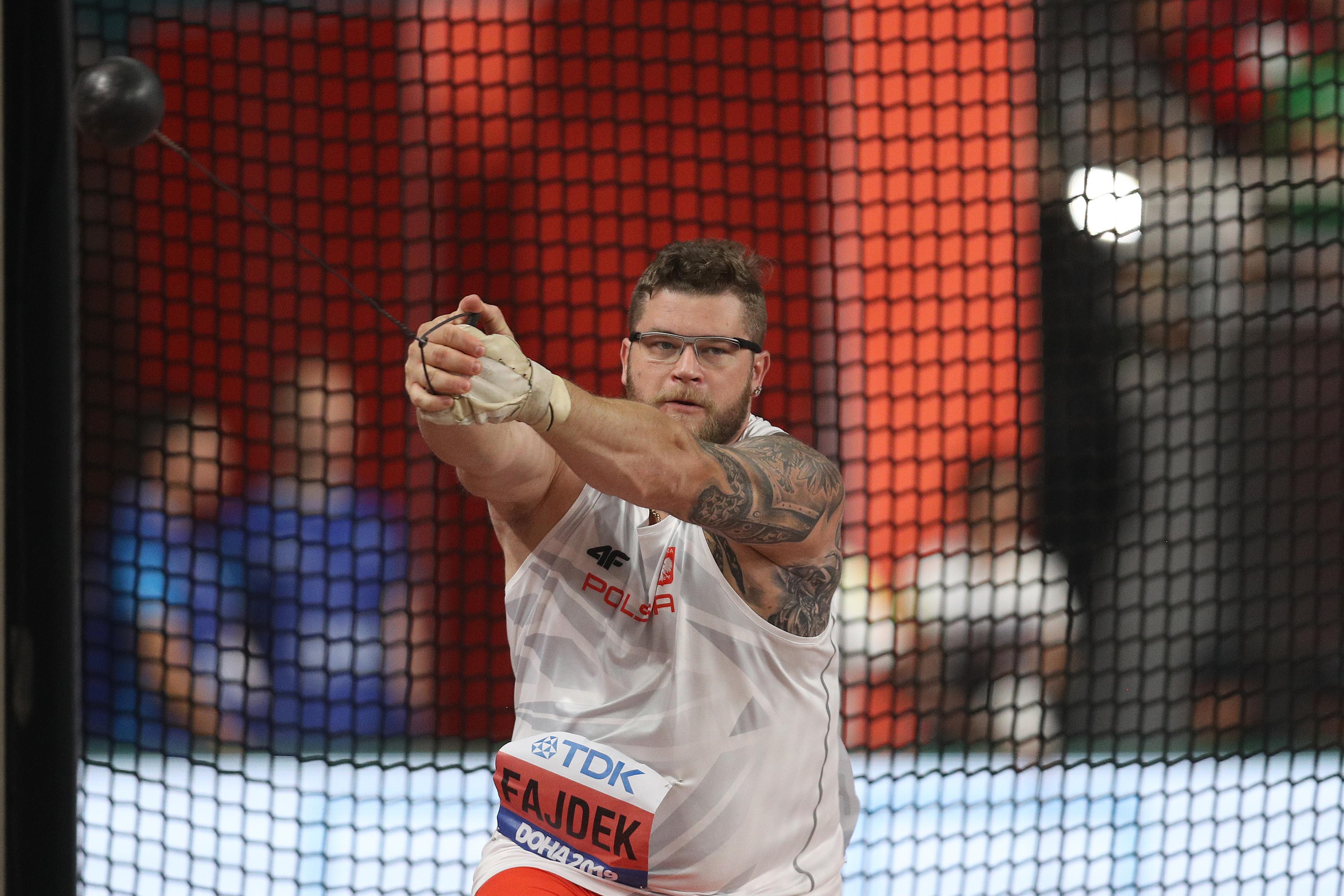
The hammer throw requires careful technique to ensure the athlete throws the hammer the farthest distance possible. The correct hammer-throwing technique also helps prevent injury to the athlete, officials and spectators.
Before you begin, you need to decide on your technique. If you’re a beginner, you may want to use a three-turn, single-arm technique, while experts will use a four-turn, two-arm technique. It’s recommended that you begin training with the simpler technique before advancing.
Throwing the hammer is done in various phases. Here’s a hammer throw technique step-by-step guide that will help you throw safely and effectively:
Hold the grip with both hands (or one if you’re using a beginner’s technique) and stand with your feet slightly apart to ensure good balance. One or two initial swings will also help with balance and establishing rhythm.
If you’re right-handed, shift your weight from your left foot to your right while winding the hammer around your body to give your swing momentum.
Maintain your balance and rotate on the spot using the balls of your feet either three (for beginners) or four (for experts) times. Keep your arms and body straight as you increase speed on each turn.
At the end of the last turn, you should lean back slightly so the hammer is at a 45-degree angle, ready for the release.
With the hammer at the ideal angle, release the grip quickly. Continue with the direction of movement to ensure a good follow-through and you stay within the circle.
Come to a stop and stay within the circle. Once the throw is complete leave the circle only from the rear.
Key hammer throw rules include:
The hammer must consist of a metal ball (head), wire and grip. The total weight should be 7.26kg (16lbs) for men and 4kg (8.8lbs) for women and the size should be maximum 110mm (men) and 85mm (women). The wire must be no longer than 1.22m
The throwing circle must have a diameter of 2.135m (7ft) and must be surrounded by a protective cage. The opening of the cage should be 6m in width, with two movable netting panels 2m wide , only one of which will be operative at a time and the cage should be empty (with the exception of the athlete)
The athlete must begin the throw from within the circle and may only leave once the hammer has landed
Athletes can only leave from the rear half of the circle
The hammer must land within the designated 35-degree area, typically outlined in white
The hammer is usually thrown six times in an event, if the athlete is within the best 8 in the ranking after the first 3 throws.
At major championships, the format is typically a qualification session followed by a final
Measurement is taken from the nearest mark made by the head and to the nearest centimetre
If the hammer breaks mid-air, shall not be counted as a foul and the athlete shall be awarded a replacement trial.
In the event of a tie, the winner will be the athlete with the next-best measure.
The hammer throw weight varies depending on whether athletes compete in the men’s or women’s category. The total weight of the hammer (including head, wire and grip) is 7.26kg (16lbs) for men and 4kg (8.8lbs) for women. This weight is consistent across different events, including World Athletics Championships and the Olympics.
To effectively and safely throw a hammer, it involves several pieces of equipment. These include:
A hammer that meets the required specifications
Comfortable, non-restrictive clothing
Flat-soled and smooth shoes
Leather or vegan-leather gloves
Chalk
The average hammer throw distance for advanced athletes is between 70 and 80 metres for men and 65 and 75 metres for women. The farthest hammer throw recorded was by Soviet athlete Yuriy Sedykh in 1986, with an incredible distance of 86.74m (284ft 6in).
 CAN
CAN
 HUN
HUN
 UKR
UKR
 GER
GER
 USA
USA
 FRA
FRA
 POL
POL
 NOR
NOR
 USA
USA
 HUN
HUN
 CAN
CAN
 USA
USA
 FIN
FIN
 USA
USA
 CHN
CHN
 CHN
CHN
 POL
POL
 USA
USA
 USA
USA
 FIN
FIN


